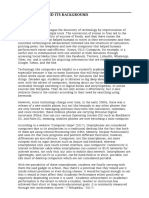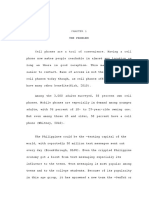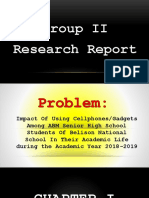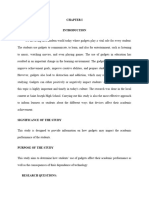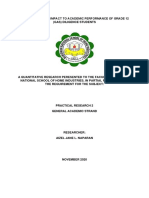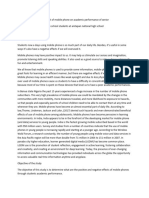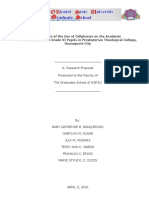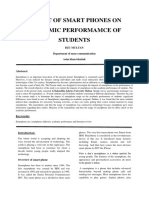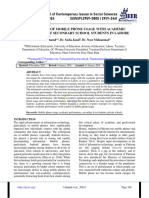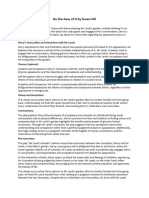0% found this document useful (0 votes)
157 views12 pagesHyacinth
The document discusses a study on the impact of smartphone use on the academic performance of Grade 12 STEM students at Dangcagan National High School. It aims to determine the relationship between smartphone use and students' grades, as well as the effects of smartphone addiction. The study is significant as it can help students, parents, and teachers understand how smartphone use affects academic achievement so they can make adjustments to support students' success. The scope is limited to surveying 20 randomly selected Grade 12 students over the 2017-2018 academic year.
Uploaded by
earl9rivera-830280Copyright
© © All Rights Reserved
We take content rights seriously. If you suspect this is your content, claim it here.
Available Formats
Download as DOCX, PDF, TXT or read online on Scribd
0% found this document useful (0 votes)
157 views12 pagesHyacinth
The document discusses a study on the impact of smartphone use on the academic performance of Grade 12 STEM students at Dangcagan National High School. It aims to determine the relationship between smartphone use and students' grades, as well as the effects of smartphone addiction. The study is significant as it can help students, parents, and teachers understand how smartphone use affects academic achievement so they can make adjustments to support students' success. The scope is limited to surveying 20 randomly selected Grade 12 students over the 2017-2018 academic year.
Uploaded by
earl9rivera-830280Copyright
© © All Rights Reserved
We take content rights seriously. If you suspect this is your content, claim it here.
Available Formats
Download as DOCX, PDF, TXT or read online on Scribd
/ 12

